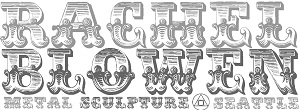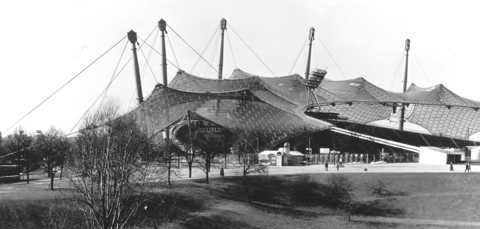Abstract
Rachel Blowen’s Aesthetic Abstract
My design principles are influenced by forms found in nature. As are all carbon-based forms, metals are sequenced crystal structures whose shape is specific to each type of material and its condition—rapid heating and cooling, carbon content, strain, etc. The varying patterns of these atomic colonies are directly responsible for the flexibility, strength, conductivity, texture and even the color of each metal.
There is a precedence in the natural world of form seemingly growing from nothing. The Fibonacci sequence is an example of structure generated from a point of origin, following a ratio of growth as the object creates itself. This is responsible for the structural formation of everything from planetary alignment to leaf patterns to the segmentation of the bones in the human hand. In a practical application, if I were brainstorming a mechanical joint I might consider the leg of a grasshopper’s amazing torque and propulsion with very little clearance. I see these patterns as remarkably beautiful, mysterious in their self-actualization, and above all, remarkably efficient. I almost always mimic these ratios when establishing the base dimensions of any new project.
Frei Otto, the architect responsible for the creation of the Olympic Stadium in Munich, originally got the idea for a free-flowing fabric of metal and glass from submerging a board mounted with vertical wooden posts in his bathtub. He submerged the board in liquid soap and water and brought it up slowly, making sure not to break the surface tension. The surface of the soap formed a continuous membrane evenly distributed across the vertical posts. He used the implicit knowledge and efficient precision of natural forms to re-consider the essence and function of a product. His designed object was one of optimal strength that maximized stadium space with the warmth of a simplified organic aesthetic.
When I was designing the logo for Dark Coast Press, a local literary publisher, the owners wanted a rhythmic representation of a dark ocean tide simple and bold enough to be clearly conveyed on everything from a thirty-foot sign to the half-inch spines of their books. I looked to ancient sacred geometry to capture the perfect balance of the tide and the nautilus-driven celtic spirals became the basis of my design.
My sculpture and metal work have ranged from real and imaginary creatures to Platonic shapes (cubes, dodecahedrons) and sacred geometry (fractals, squared circles, Metatron’s cube). By bringing these hypothetical, dream-like patterns into the physical world through sculpture, I find pleasure and contemplation in seeing these forms in an aesthetic but practical setting. Now, versed in welding, educated in metallurgy, with ongoing metal fabrication training, my future aspirations are works that create entire environments invoking comfort and imagination, be it an elevator cab that maximizes interior space, a stairwell landing that invigorates, or a sleek and sturdy table that defines an entire break room.


